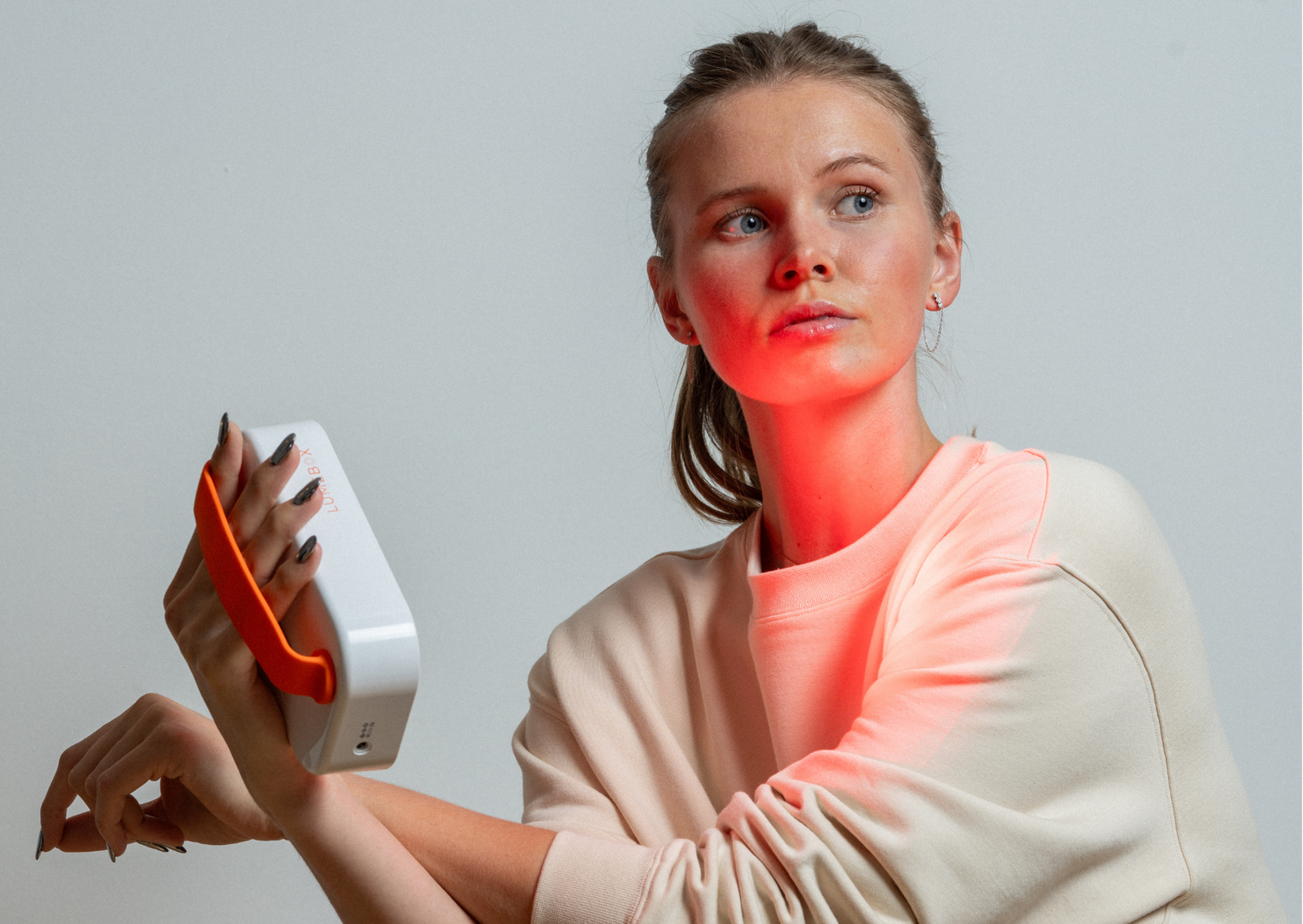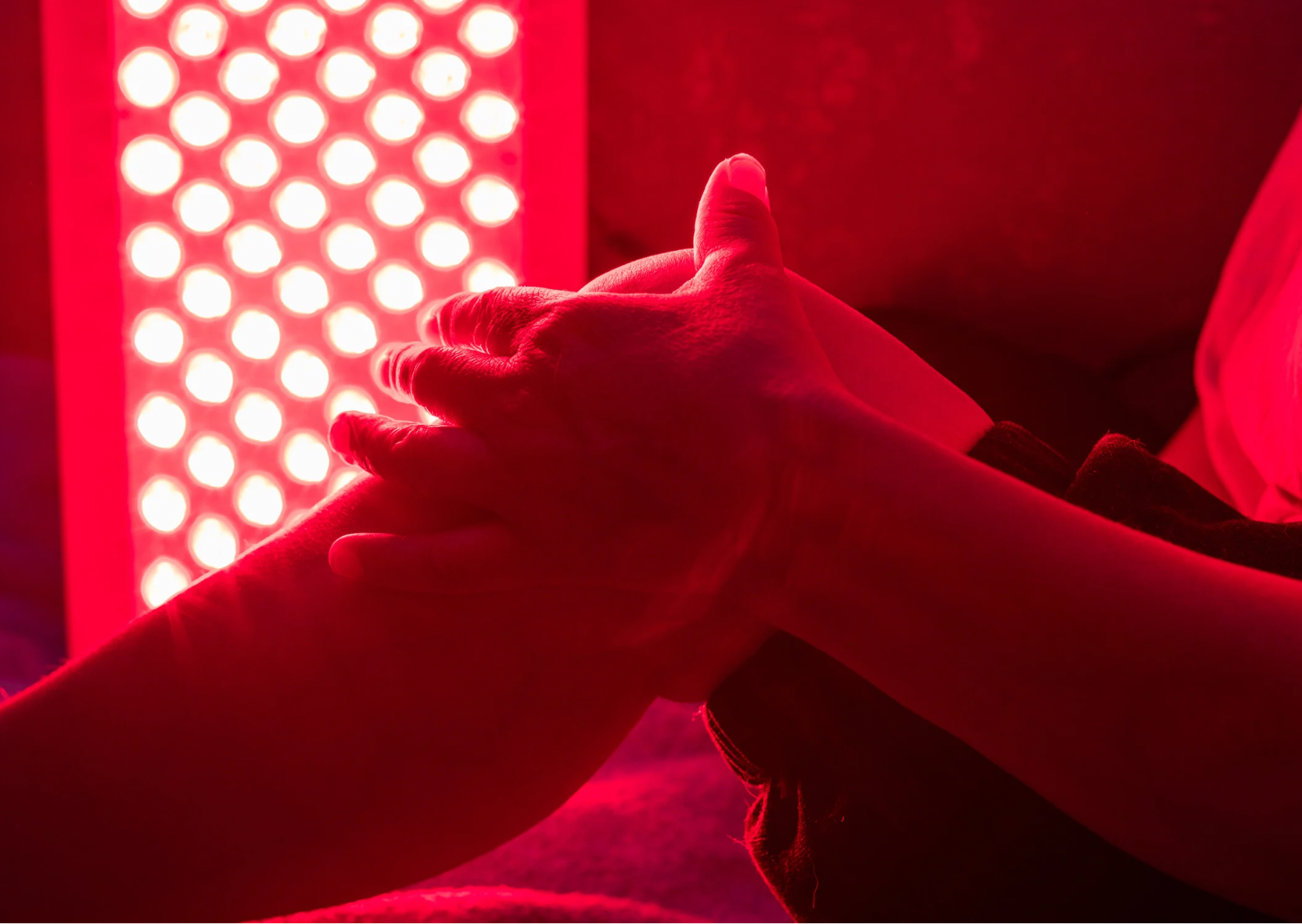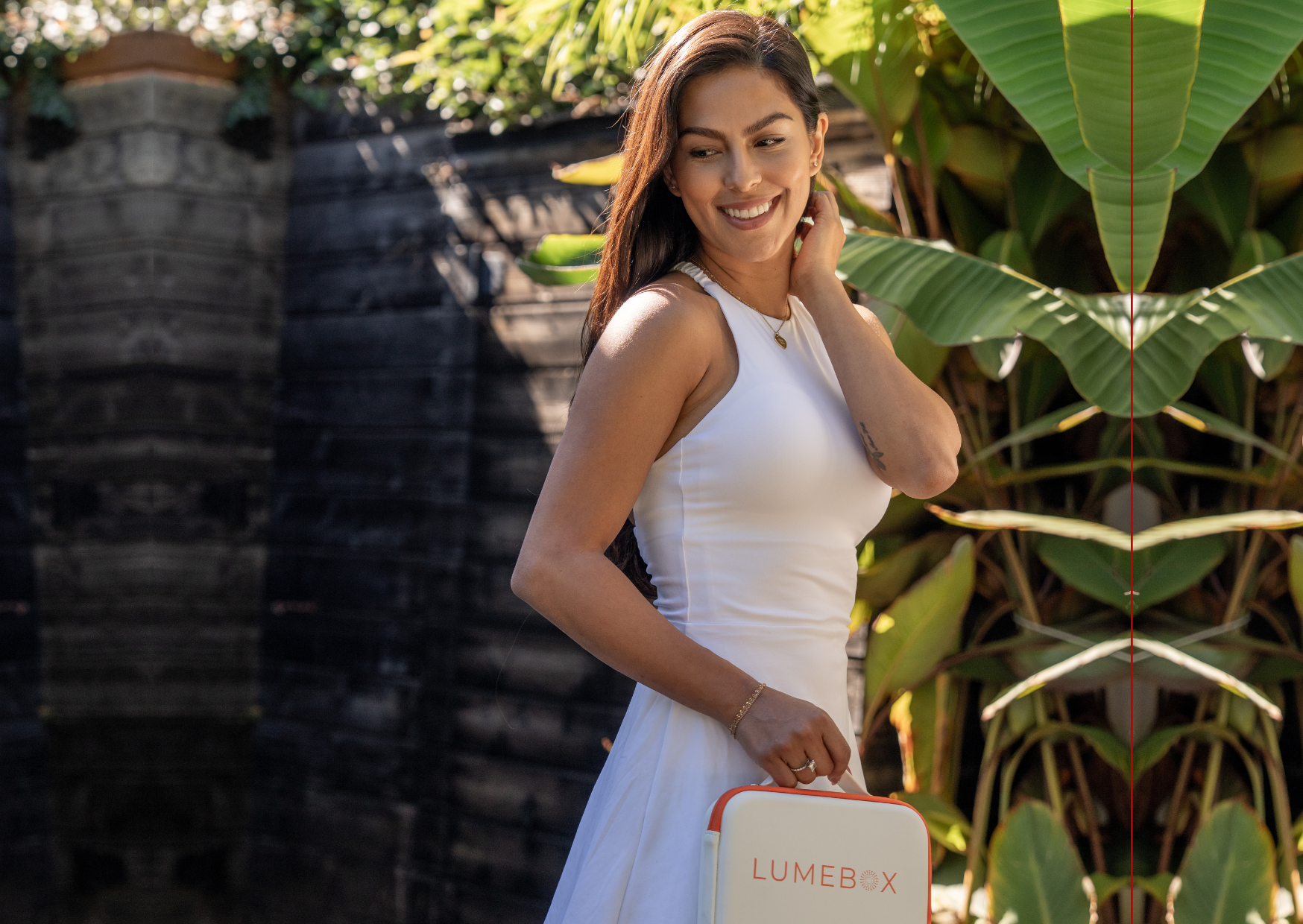Red light therapy is gaining momentum as a go-to wellness tool, and for all the right reasons. Yet, there's still a bit of confusion around what it actually does and how it works its magic. Not all red light therapy devices are the same.
In this blog post, we're tackling some of the most commonly asked questions about red light therapy. And remember, if you're still left with unanswered questions after reading this post, we’ve got lots more information on our FAQ page, the blog on our website, our Youtube channel, and Instagram!
Before diving in, it’s important to note that any advice provided here isn't a one-size-fits-all solution for a couple of reasons:
- Device Variability: Different devices emit varying types and intensities of light, tailored for specific purposes. While we can provide general recommendations for using LUMEBOX, these tips likely won’t cut it for a different device.
- Individual Differences: Just as people tan differently under sunlight, individuals respond uniquely to red light therapy. Factors such as skin sensitivity and optimal exposure duration vary from person to person. It’s also always wise to consult with your doctor before initiating any new treatments.
Red Light Therapy Basics
What is Red Light Therapy?
Red light therapy uses specific wavelengths of red and near-infrared light to target our mitochondria (the powerhouse inside our cells) to:
- Increase ATP (cellular energy)
- Increase blood flow
- Reduce inflammation
What does LED mean?
LED devices emit light at a lower power (or irradiance) and cover a larger surface area (than a laser red light therapy device), making them perfect for treating muscle groups or entire facial regions. LED red light therapy, a newer approach gaining traction, is safer and more accessible for at-home use compared to laser therapy, making it a cost-effective alternative.
What is the difference between red and near-infrared light (NIR)?
Red light therapy typically utilizes both red light (this is visible light in the 620 - 750 nm wavelength range) and near-infrared light (NIR), which has a wavelength above 800 nm and isn't visible to the naked eye. Near-infrared but can penetrate deeper.
When delivered at a high enough power (irradiance), both these wavelengths can better penetrate the skin barrier than other colors, but near-infrared has the unique capability of reaching deeper into tissues.
To learn more about the differences between red and near-infrared light, head over to our blog post all about that!
Why would I use red, not blue?
Some LED devices use colors like blue, green, and amber for different purposes. Red light is renowned for its skin and anti-aging benefits, while blue is known for its ability to target acne-causing bacteria. However, blue ‘may’ be associated with oxidative stress and aging [1, 2, 3], and may also affect our circadian rhythm if used at the wrong time - so be mindful if you use the other wavelengths light blue.
Are INFRARED saunas the same as a LUMEBOX?
No. Even within the term “infrared” light, there is nuance: there is far, mid, and near-infrared.
Mid- to far-infrared is what is normally used in infrared saunas. Their key purpose is to heat up the body’s core temperature to get a sweat going.
Conversely, red and near-infrared are the wavelengths that have been studied for mitochondrial health and show associated benefits with skin health, pain, and inflammation relief.
Use LUMEBOX for skin health, tissue healing, temporary pain and inflammation relief.
Use infrared sauna to sweat.
Which mode on LUMEBOX should I use?
We discuss a lot of this information in our blog post on RED vs NIR light, but whether you use RED, NIR, or both depends on what you want to use red light therapy for.
Do you want healthy skin, muscles, joints, relaxation benefits, or something else?
A good rule of thumb is:
- Use the light you can see (red) for things you can see e.g. use red for skin, cuts and scrapes
- Use the light you can’t see (NIR) for things you cannot see e.g. use NIR for joints/muscles.
If in doubt, just use both RED and NIR at the same time (unless it is for skin, where the ideal wavelength is red)!
Does it actually work?
Over 2,000 studies have been published on Photobiomodulation and Low-Level Laser Therapy (the scientific terms for red light therapy). We have included a few examples linked below of studies using different devices (not LUMEBOX):
1) Healthy skin
- Acne, scars, inflammatory skin conditions
- Red and NIR in reduction of fine lines, wrinkles, skin roughness, collagen
- LED phototherapy for skin rejuvenation
- Wound healing
- Appearance of cellulite, when paired with exercise (small, preliminary studies)
2) Pain & Inflammation
- Anti-inflammatory effects of photobiomodulation including specific conditions like arthritis, inflammatory pain, and autoimmune conditions.
- Rheumatoid arthritis
- Fibromyalgia
- Temporomandibular joint disorders
- Neck pain
- Tendinitis (plantar fasciitis)
3) Recovery and Performance
Other studied benefits:
- Patterened Hair loss
- Blood glucose (small, preliminary study and not conclusive)
- Rest & relaxation
- Energy and mood (preliminary studies and not conclusive)
- Gut health (small, preliminary study and not conclusive)
These studies were not done using LUMEBOX, but rather other types of LED red light therapy devices and sometimes lasers.
Duration
How long should I use red light therapy for?
Everyone responds to light differently, just like we all make different amounts of vitamin D from sunlight. Some people require a higher light dosage to see benefits, whereas others only need very little.
That said, we suggest beginning slowly. If you’re using LUMEBOX on the face, just 5 minutes, 4-6 inches from the skin, a few times per week is a great starting point. Gradually increase the number of sessions per week if you tolerate the light well!
When using LUMEBOX in NIR mode for deeper tissues, try it out for 6-12 minutes (you can use this mode a little closer to the skin) and gradually increase up to a full 12-minute cycle, and more regular use throughout the day, from there, as tolerated.
More is not always better though. Studies show that there is an ‘optimal’ dose for most tissues… Everyone is different and some people may need more, but if you have a LUMEBOX, the general rule is no more than 2 cycles over the same tissue area per 24 hours, unless directed by a doctor. Ideally, you would space this out over a few hours too so the usage is not back-to-back.
What is dosage and how can I alter it?
Dose is basically the amount of light to which a person is exposed. If you’re into the math and physics of it all, the most common formula is calculated as follows:
Dose (in J/cm²) = Power Density (in mW/cm²) x Time (in seconds) x 0.001
The studies on red light therapy often give a total dosage measure to quantify how much red light was delivered within a treatment window.
The more powerful your device, the higher the dose it’ll deliver in a given period of time.
Dose can be altered though - with LUMEBOX, either moving the device further away from you to reduce the irradiance or by cutting down the time you use it for.
When you purchase a LUMEBOX, we provide a Kickstarter guide that gives you some general information on ideal ‘doses’.
How long does it take to see results?
Consistency is key with red light therapy as benefits aren't always immediate; for instance, skin improvements may take 6-8 weeks to become noticeable.
Be careful not to overdo it though - there’s something called the Biphasic Dose Response which describes how it is possible for us to get too much of a good thing.
Less is more with red light therapy (but that said, if you’re not seeing any benefits after 3-4 weeks, you may need to up your dosage slightly).
Oh, and one more thing—we like to call red light therapy the Swiss Army knife of wellness because it’s a lifelong tool that remains beneficial no matter your age. The sooner you start, the more benefits you'll experience over time. With consistent use, the advantages only increase!
Safety
Do I need to wear eye protection?
You may have seen some people say red light therapy is ‘good’ for your eyes. Red light therapy has been shown in some early clinical trials to support eye health and vision. However, we caution against drawing definitive conclusions from these since these are VERY small studies, and used very low doses of light (~8mW/cm2) whereas LUMEBOX delivers up to 140 mW/cm2 irradiance.
We don’t recommend looking at LUMEBOX directly, so to be 100% safe, protect your eyes with the goggles we provide when your eyes are in the beam window until we know more!
Can LUMEBOX touch my skin?
In our manual, we recommend keeping the LUMEBOX at a distance from your skin. This distance depends on the mode you’re using as well as the treatment area. Near-infrared light from a powerful device may heat the skin and underlying tissue, so some people with sensitive skin might find the light warm or hot. This is why we include this precaution in the manual. If you see others using it directly on their skin, it's because individual tolerance levels differ.
Can Pregnant, nursing women or children use LUMEBOX?
There isn't enough research on red light therapy (RLT) during pregnancy, so to be 100% safe, please check with your doctor before using it or as recommended by your physician or OB/GYN. Regulations require listing it as a contradiction because the studies are lacking.
While some breastfeeding customers have found benefits after consulting their doctors, it's best to get approval from your healthcare provider who knows your health history.
The same goes for nursing women and children - there are some very small studies of it being used in children. However, we don’t know enough yet about the long-term consequences, and if you’re considering using it with children, we recommend consulting with a healthcare professional if you have any concerns. Please also note that all treatments with children should be done under adult supervision.
Will red light therapy work through clothing?
It's best not to use the LUMEBOX through clothes or under bed covers or blankets. While it's unlikely to cause any damage, dark colors, and certain fabrics can trap heat, just as if you were to wear black leggings in the sun. Using the LUMEBOX through clothes might lead to a greater heat increase and potentially irritate the skin.
The Questions You Didn’t Think Of
Can you fly with LUMEBOX?
LUMEBOX is the perfect portable red light therapy device and travel companion. It fits easily in your hand luggage, most airlines allow it in the hold, and it’s great for vacation when you have sore feet, bug bites, or sunburn!
Airplane travel tips:
- Treat LUMEBOX like a laptop when going through security and take it out of your carry-on bag.
- If you want to put LUMEBOX in the hold, check with your airline about battery allowances before you get to the airport.
LUMEBOX has a 10400mah Lithium battery (around 38-watt hours)
LUMEBOX is 110-240V so can be charged worldwide, all you need is a local plug adaptor.
How to use red light therapy at home:
Feeling ready to start integrating LUMEBOX into your daily routine? LUMEBOX is powerful and portable, making it versatile for many uses throughout your day. Here are some of our favorites:
- Morning Skincare: Spend 5 minutes with RED light, 5-6” away from your face, while doing a short breathwork or meditation session.
- Enhance Your Yoga Practice: Place LUMEBOX in combined mode at the top of your mat or near a body part that needs extra attention while holding gentle stretches.
- Workout Gains and Recovery: Use NIR mode pre- and post-workout on the muscle groups of focus for the day. If I’m going on a run, I’ll use it before and after on my quads and hamstrings. If I’m doing arms in the gym, I’ll bring LUMEBOX with me to use in between sets!
- Travel Buddy: Bring LUMEBOX with you in the car, to the gym, to work, to the park, on vacation… you name it!
- Workday Integration: Use LUMEBOX on sore feet while you work or place it behind your back as you sit at your desk.
- Relax Before Bed: Shine NIR mode on the back of your neck a few hours before bed to support sleep hormones.
We hope you’ve found this information useful for your red light therapy journey! If you’re more of a visual learner, visit our YouTube channel where we dive into various red light therapy topics, and follow us on Instagram @lumeboxpro for daily wellness tips!
New to red light therapy? Download our free eBook to help you choose the best device.
Already have a LUMEBOX? Download our 6 time-saving tricks guide!
Medical Disclaimer: The information contained in this blog post is intended for educational purposes only and should not be used as medical advice. Everyone responds to light differently. Testimonials are not a guarantee of the results you or anyone who uses LUMEBOX will get because your success depends entirely on your circumstances, and the studies on red light therapy shared were not specifically performed using LUMEBOX. Please check with your doctor before using red light therapy and do not change your medical treatments or lifestyle without consulting your physician first.
References:
[1] Godley, B. F., Shamsi, F. A., Liang, F. Q., Jarrett, S. G., Davies, S., & Boulton, M. (2005). Blue Light Induces Mitochondrial DNA Damage and Free Radical Production in Epithelial Cells. Journal of Biological Chemistry. https://doi.org/10.1074/jbc.M502194200
[2] Vandersee, S., Beyer, M., Lademann, J., & Darvin, M. E. (2015). Blue-violet light irradiation dose dependently decreases carotenoids in human skin, which indicates the generation of free radicals. Oxidative medicine and cellular longevity, 2015, 579675. https://doi.org/10.1155/2015/579675
[3] Kumari, J., Das, K., Babaei, M., Rahmatpour Rokni, G., & Goldust, M. (2023). The impact of blue light and digital screens on the skin. Journal of Cosmetic Dermatology. https://doi.org/10.1111/jocd.15576





